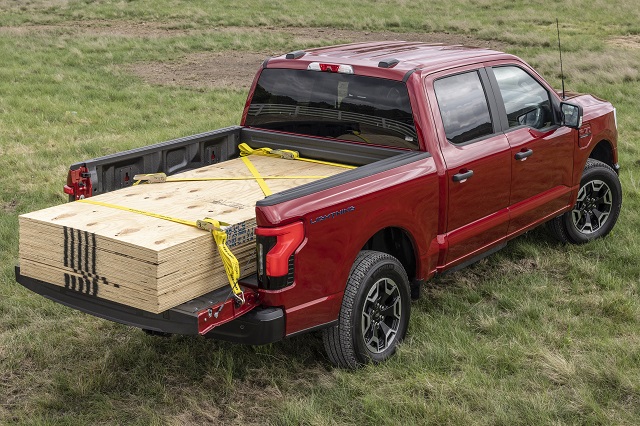When drivers load an electric pickup with heavy cargo, they make the vehicle work harder, significantly reducing the truck’s range. But by how much? AAA Automotive Engineering researchers recently tested the Ford F-150 Lightning, the electric version of the iconic best-selling American pickup, to determine the impact of payload on the range. When loaded with 1,400 pounds of sandbags, 110 pounds shy of its maximum capacity, the Lightning’s range dropped from 278 miles to 210 miles, a reduction of 24.5%.
“Our testing revealed a significant range reduction, but it’s important to note that the Lightning was loaded to near its maximum capacity,” said Greg Brannon, director of AAA Automotive Engineering. “Most buyers will likely use their Lightning with a lighter load, resulting in a much smaller range reduction.”
It’s also important to remember that the driving range of all vehicles, whether gas-powered or electric, is affected by weight. And as battery technology continues to improve, EV range will likely increase. However, even with current technology, electric vehicles are still more energy-efficient than gas-powered vehicles regarding energy consumption. The Ford Lightning’s range is less than its gas-burning cousin, which may get over 500 miles per tank unloaded. Buyers concerned about EV range should consider the driving they will be doing and choose the right vehicle for their needs. The difference, for now, is that it is easier to gas and go than stop and charge.
In general, heavier payloads will reduce the range of an EV. This is because the extra weight requires more energy to move. The type of driving also plays a role. Highway driving, which typically involves higher speeds and less regenerative braking, will further reduce range. Unlike gas-powered vehicles, which perform more efficiently at highway speeds, EVs thrive in urban driving conditions due to regenerative braking from more frequent stops. Regenerative brakes capture the energy from braking and convert it into the electrical power that charges the vehicle’s high-voltage battery. This electricity can then be stored in the car’s battery or power other electrical components.
In the case of battery electric pickups used as work vehicles, permanent loads (such as equipment racks, toolboxes, and equipment trays built into the vehicle) will reduce the range at all times, even without additional cargo.
Visit AAA’s Electric Vehicle platform for more information on these cars of the future.
One Thought on “EVs: The Heavier the Load, the Shorter the Trip”
Leave A Comment
Comments are subject to moderation and may or may not be published at the editor’s discretion. Only comments that are relevant to the article and add value to the Your AAA community will be considered. Comments may be edited for clarity and length.
















Hey AAA Automotive Engineering researchers – I like your new EV info and insights focus to help members make cleaner and better decisions. However can you help me and readers understand what the fuel economy range drops in actual and % terms to the most similar featured F-150 ICE model get a more “apples to apples” context between F-150 powertrain types?
Plus it would be good to know what cost per mile per operating costs between each are (Lighting vs similar ICE model – as I suspect less fueling costs (even at average retail electricity prices), brake, oil changes, maintenance, insurance costs – and perhaps in some states lower annual registration, tolls and no emission testing fees). Good to get the full view to help understand total cost / benefit of ownership. Thanks.